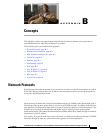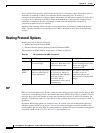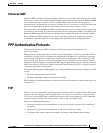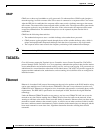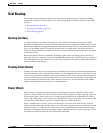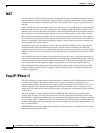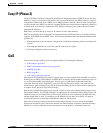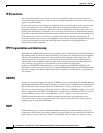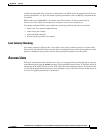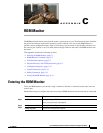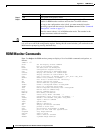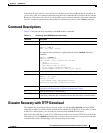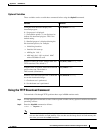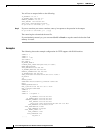
B-9
Cisco 860 Series, Cisco 880 Series, and Cisco 890 Series Integrated Services Routers Software Configuration Guide
OL-18906-02
Appendix B Concepts
Access Lists
insufficient bandwidth, delay variations, or information loss. RSVP works in conjunction with current
queuing mechanisms. It is up to the interface queuing mechanism (such as CBWFQ) to implement the
reservation.
RSVP works well on PPP, HDLC, and similar serial-line interfaces. It does not work well on
multi-access LANs. RSVP can be equated to a dynamic access list for packet flows.
You should configure RSVP to ensure QoS if the following conditions describe your network:
• Small-scale voice network implementation
• Links slower than 2 Mbps
• Links with high utilization
• Need for the best possible voice quality
Low Latency Queuing
Low latency queuing (LLQ) provides a low-latency strict priority transmit queue for real-time traffic.
Strict priority queuing allows delay-sensitive data to be dequeued and sent first (before packets in other
queues are dequeued), giving delay-sensitive data preferential treatment over other traffic.
Access Lists
With basic standard and static extended access lists, you can approximate session filtering by using the
established keyword with the permit command. The established keyword filters TCP packets based on
whether the ACK or RST bits are set. (Set ACK or RST bits indicate that the packet is not the first in the
session and the packet therefore belongs to an established session.) This filter criterion would be part of
an access list applied permanently to an interface.



